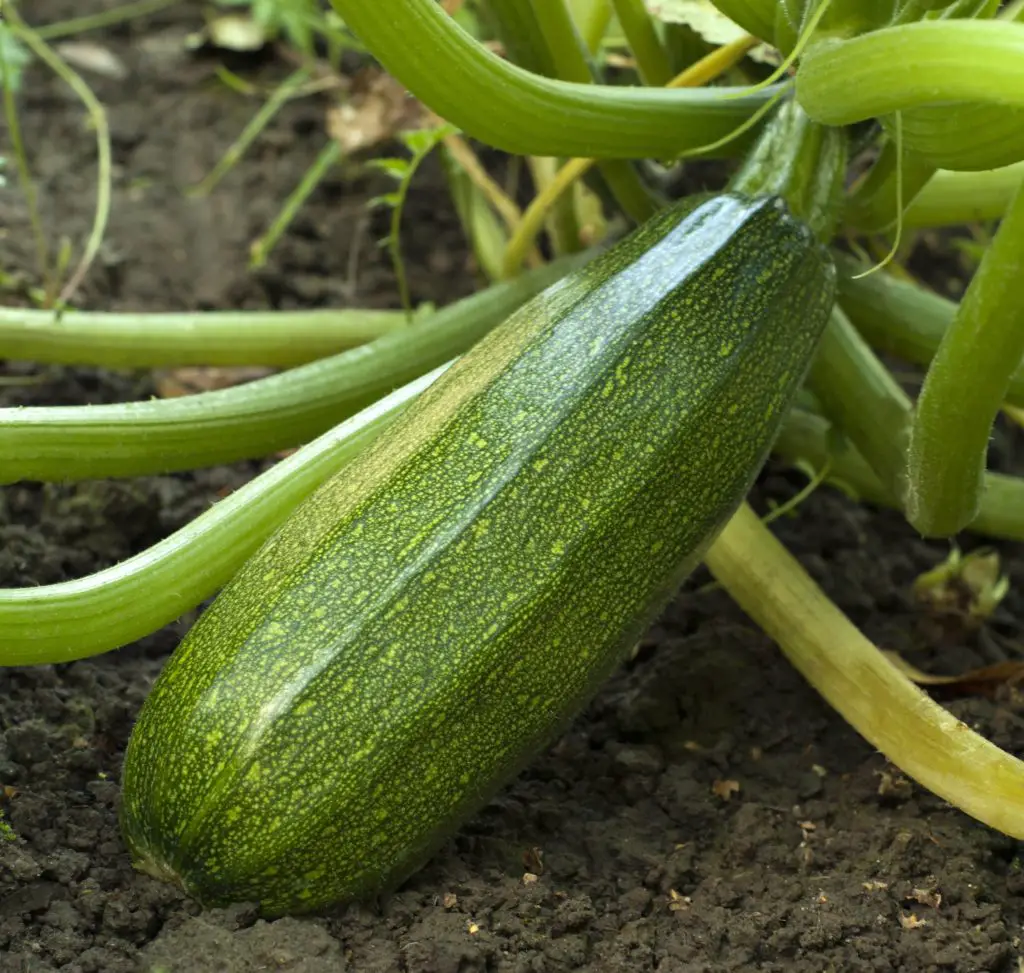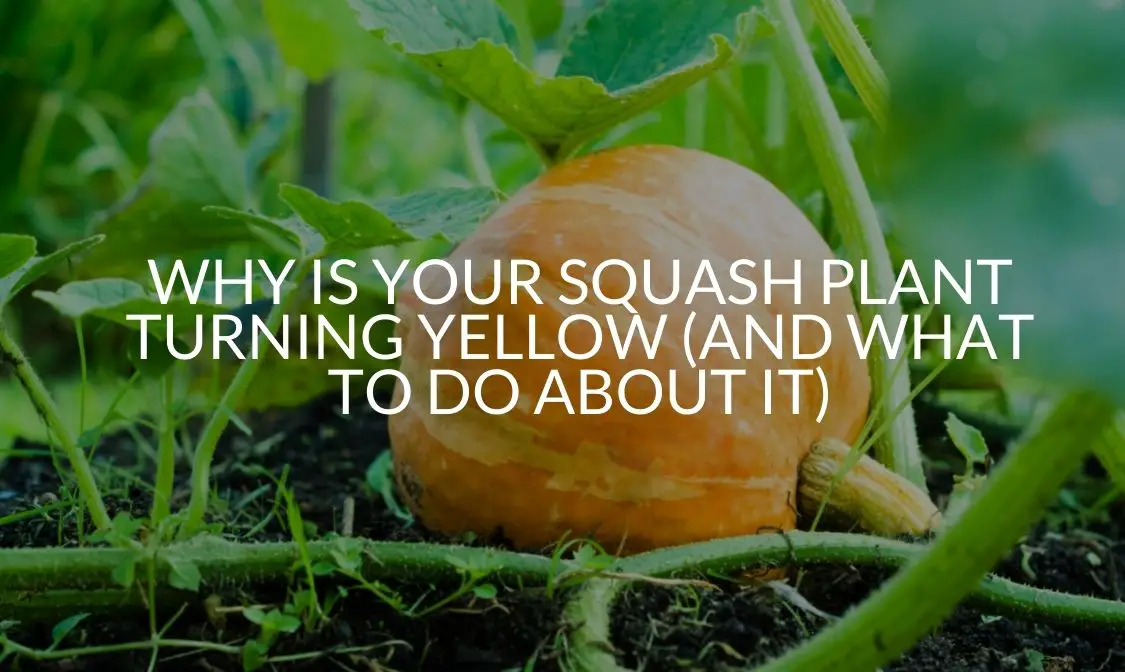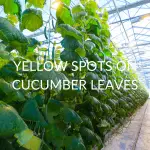If you’re thinking that it seems unhealthy for your squash plant for its leaves and vines to be turning yellow, then you’d be right. This is generally an indicator that something is going wrong. But why is your squash plant turning yellow?
Well, your squash plant is probably turning yellow because of a watering problem or a nutrient deficiency. However, there are other reasons your squash plant could be turning yellow as well.
Much of this depends on what part of your squash plant has the discoloration, and what conditions your squash plant is in. Read on to find out exactly why your squash plant is turning yellow, what that means, and how you can fix it for a happier, healthier squash plant.
Why Is Your Squash Plant Turning Yellow (And How To Fix It)?
As stated above, there are a number of reasons that your squash plant might be turning yellow. This, again, depends on what part of your squash plant is turning yellow. However, there are some general “rules of thumb” you can follow to avoid yellowing.
Underwatering
As you’d probably suspect, one of the main reasons that squash plants turn yellow is that they are underwatered. As many plants are, your squash is extremely reliant on being watered properly in order to stay healthy.
If your squash plant’s leaves are turning yellow (or even have yellow spots), it could be a sign that it’s dehydrated, and not receiving enough water. This is a pretty simple fix, simply increase the amount of water you’re giving your squash plant or the rate at which you are watering it!
Be careful, though. You don’t want to pour it on too much, as to avoid our next problem!
Overwatering
Just like you can underwater and dehydrate your plant, you can also overwater your plant, which can be equally damaging, believe it or not. Too much water in the soil can actually constrict the roots of the plant, not allowing nutrients, water, and other necessary things to get to the plant in the proper amounts.
This too is an easy fix. Just cut back on the amount of watering that you’re doing. This too will be easy if you stick to a watering schedule.
On the surface, it seems like with water it is more the merrier. However, you need to be quite careful with giving the right amount of water to your plant, so you can avoid constricting the roots and halting the transport of nutrients to the rest of your squash plant.
Watering Schedule
Whether you’re overwatering or underwatering, this is among the most likely reasons that you’re squash plant is turning yellow. So what can you do to fix it? Well, a watering schedule will probably go a very long way in helping you consistently provide your squash plant with the proper amount of water.
Generally speaking, 1 inch of water weekly is a good amount for your squash plant. However, during hotter periods, such as June, July, and August, two inches of water might be better, especially if your squash plant is in direct sunlight.
The best way to truly know if your squash needs watering is by seeing how dry the soil is. If the soil a full inch beneath the surface is completely dry, it is probably time to water. Simply stick your finger into the dirt and feel around about an inch deep.
Try not to go too deep or touch the roots or other parts of the squash, as you don’t want to damage the plant at all.
Root Rot
Root rot is a symptom of other issues that your squash might have. It can result from overwatering but can be the result of other problems as well. Most commonly in squash, it comes from infection. Viruses that cause these kinds of infections are usually present in the soil before your squash is even planted in it.
Treatment for root rot not caused by watering issues often comes in the form of fungicidal sprays or other chemical agents made to kill viruses, pests, and other things that may be harming your squash plant.
Root rot is one of the most common reasons that yellow leaves, stems, and vines come about. Although it might seem like a death sentence, it’s not actually that bad, as it is often a result of other issues such as nutrient deficiencies or overwatering. This means you don’t really have to do anything special other than solving the other problems your squash plant has.
Curing root rot is the same as avoiding it. Make sure you aren’t overwatering or underwatering by sticking to a watering schedule. Make sure that you have proper organic matter in your soil that provides nutrients to your squash plant as well. This way, you can avoid root rot and prevent it from happening again in the future.

Why Are The Leaves On Your Squash Plant Turning Yellow (And What To Do)?
What if it’s not the whole plant, but only the leaves that are turning yellow? Well, there are a number of reasons that might affect only the leaves of your plant. However, keep in mind that this might still be coming from problems we discussed above, such as underwatering, overwatering, or root rot.
Pests
One of the major contributors to yellowing leaves on a squash plant can be pests. Most commonly, squash bugs and whiteflies are the culprits. Both whiteflies and squash bugs leave behind a yellow or brown bitemark. Not much later, the leaf will begin to wilt and turn yellow.
These pests can quickly kill the leaves of your squash plant, rendering it unable to grow and remain healthy. That’s why it’s very important to take care of a pest problem as soon as you possibly can.
One of the best and simplest solutions to a pest problem is to simply move the plant. Alternatively, there are plastic or glass plant covers that can keep pests away, but this makes watering and treating the plant’s other issues a headache, so they are more of a last-ditch effort.
Light
Almost everybody, plant owners or not, knows the simplest rule of taking care of plants. Plants, including your squash plant, need two things. Water and light. If your leaves are turning yellow, and you don’t see the identifiable markings of a pest problem, you might have a problem with the amount of sunlight that your squash plant is receiving.
In low light, your squash plant’s leaves won’t be able to photosynthesize properly, meaning they won’t be receiving the proper nutrients they need to survive. This will cause them to wilt, which starts with a yellow color.
Make sure that your squash plant is getting as much direct sunlight as it can throughout the day. This is relatively easy if it’s outside. Just make sure there aren’t any trees or other tall objects around that can block sunlight for large parts of the day.
It should be noted that as far as light goes, it’s quite good for the leaves of your squash plant. However, as we’ll discuss later, it isn’t great for the squash fruit to be exposed to direct sunlight. Try and make sure that if your leaves are in decent shape, they are blocking the fruit from direct sunlight.
Bacterial Wilt
If your leaves are not quite yellow, but closer to dull green in color (different from how the leaves are supposed to be colored), then you might have a very serious problem on your hands known as bacterial wilt.
A tell-tale sign that your squash plant is experiencing bacterial wilt is if your leaves wilt during the day, but then recover from that wilting during the night, and then repeat this process. Eventually, they will start to turn yellow and brown and then die.
Unfortunately, bacterial wilt probably spells the death of your squash plant. It is spread by beetles that acquire it from other infected plants, so the only way to prevent it is to take pest prevention measures similar to the ones mentioned above in the pests section.

Why Are Your Squash Vines Turning Yellow (And What To Do)
Now, if you’re squash plant’s vines are turning yellow, you might have a different problem on your hands. There are a few reasons that the vines (or any non-leaf parts of your squash plant) might be turning yellow. Read on to find out why!
Iron Deficiency
One of the reasons that the vines or non-leaf parts of your squash plant might be turning yellow is that your squash plant’s iron intake is too low. When iron is not available to your squash plant’s vines, it is unable to properly grow due to a lack of the proper nutrients. This results in the yellow color you might be seeing.
There are a number of ways that you can combat this lack of iron availability.
- Lower Soil pH: A lower soil pH will lend itself to more iron in the soil.
- Correct overwatering: If your soil is too wet, it could constrict the roots, slowing or completely stopping the absorption of iron from the soil.
- Reduce phosphorus levels in the soil
- Add organic matter to clay soil. This only applies if you’re using clay soil, which lacks the organic matter that iron is found in.
Try all of these methods to see if they provide more iron to your squash plant’s vines and non-leaf parts. If none of these seem to fix the yellowing of your squash plant’s vines, perhaps you have a different problem on your hands.
Vine Borers
Another one of the most common reasons the vines of your squash plant might be yellow is vine borers. Sometimes, vital nutrients can be cut off from reaching other parts of your squash by what’s called a vine borer.
A squash vine borer is a small creature that bores into the vine of your squash plant to suck up all the nutrients that should otherwise be going to the rest of your squash plant. This is obviously extremely bad for your squash plant and should be handled as soon as possible.
The most important and first thing you should do is to prevent the vine borer from laying eggs. This will make it so when you take care of the adult borer, you won’t be dealing with its children later on.
In order to remove a borer and/or its eggs, take the following steps.
- Cut a slit in the vine near where the borer is.
- Carefully remove the borer doing as little damage as you can to the rest of the plant.
- After removing the borer, make sure that the stem that you sliced open is underneath the soil and well covered. This will prevent more borers from entering through the slit you’ve made.
It is important to keep a watchful eye out for vine borers, as they can quite quickly kill your squash plant. If you do see one, make sure to handle it as soon as possible. If it lays eggs, it might be very difficult to get a handle on the issue.
Pest Borne Viruses
There are a number of pest-borne viruses that can do serious damage to the vines, stems, and other non-leaf parts of your squash plant. These include squash mosaic virus and zucchini yellow mosaic virus. These are the two most common viruses that can do serious damage to your squash plant.
Pesticides can prevent these, but make sure you are getting more natural pest repellents, as you don’t want to be eating squash that is covered in toxic chemicals!
Other ways to prevent pests from getting near your squash plant are protective coverings for your squash plant such as netting, plastic, and glass. These are great options, but make things like watering and maintenance more of a hassle.
Frequently Asked Questions
Here are some frequently asked questions about how to deal with squash plants that have yellowing leaves, stems, or vines.
Should You Remove Yellow Leaves From A Squash Plant
If you’re looking for a short answer for whether or not you should be removing leaves from your squash plant, the answer is no. There are a number of reasons you should avoid removing leaves from your squash plant in all situations.
Firstly, removing leaves allows bacteria, viruses, parasites, and other unwelcome guests into the inside of your plant with ease. This will only cause further problems for you and your plant, so it’s best to avoid leaving your squash that vulnerable.
Secondly, if you cut the leaves off of the plant, the sun can damage the squash fruit. Now, it is known that light is great for the squash plant, as the photosynthesis process that the leaves undergo is crucial for the nutrition of the plant.
However, the sun can damage the fruit, and the leaves are there partially to protect the fruit from direct sunlight. Removing them can be harmful to the actual squash itself.
Lastly, the leaves are an effective deterrent to weeds that can do further damage to your squash and the other plants around it. Try to avoid cutting your leaves so that weeds don’t grow and constrict or otherwise hamper your squash plant.
Are Yellow Squash Leaves Common?
Yes! Don’t panic, yellow squash leaves are an extremely common problem. Most of the reasons listed here for yellow squash leaves are not only quite common but easily preventable and/or fixable as well. This means that not only did you not make that bad of a mistake, but it can be fixed and solved for the future as well!
Simply follow the steps outlined above for any of the problems that you may have. This way you can figure out what problem is plaguing your squash plant and causing parts of it to turn yellow, and then solve the problem and prevent it from happening again in the future.
Conclusion
So, there are plenty of reasons your squash leaves, vines, and stems might be turning yellow. Most commonly it is probably from underwatering, overwatering, a nutrient deficiency, or a pest issue. All of these problems are solvable, preventable, and not a huge deal.
It could also be something more serious, such as a vine borer or bacterial wilt. These can easily kill your squash, so make sure to take care of them as soon as possible, and prevent them if they have yet to happen.
The easiest way to keep your squash plants safe, healthy, and thriving is to keep them on a consistent watering schedule, make sure they are getting plenty of light on the leaves (but not on the fruit itself), and taking preventative measures against pests such as natural neem-oil based fungicides and pesticides. Covering your plant with glass or plastic can also help, but that can get expensive and cumbersome.
So, now you know why your squash leaves are yellow, and what you can do to fix it. So what are you waiting for? Your squash isn’t going to take care of itself!



